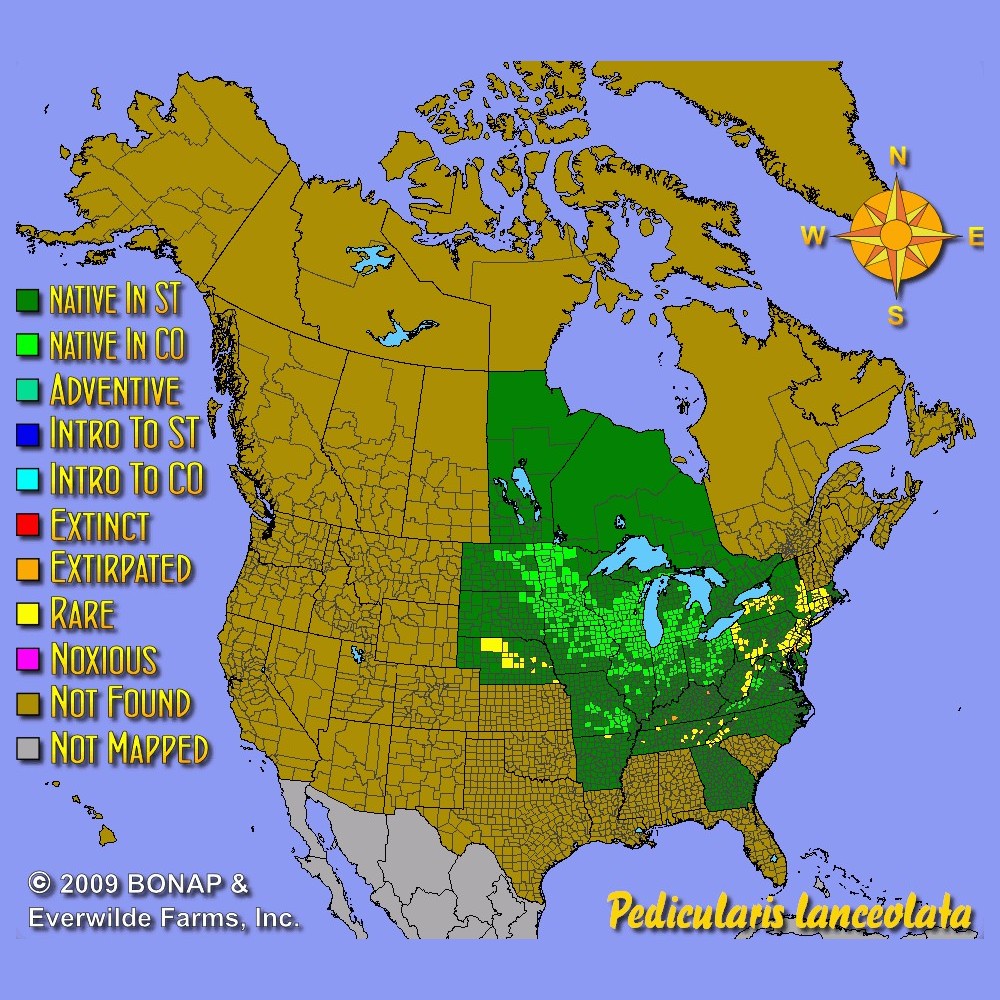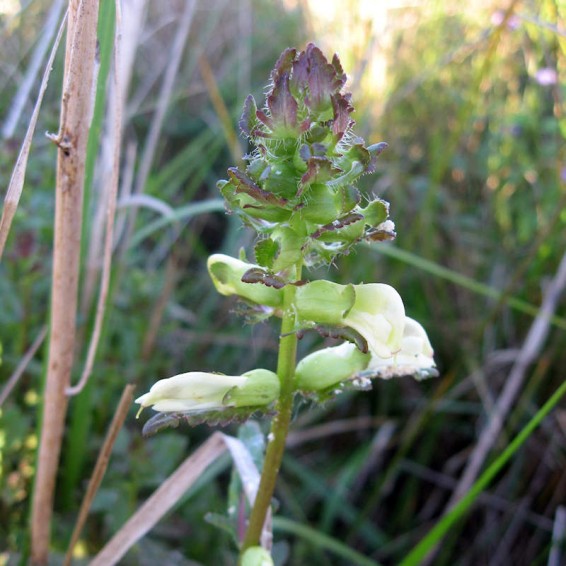Marsh Betony Seeds
Pedicularis lanceolata
- HOW TO GROW
- FAST FACTS
HOW TO GROW
Sowing: Since this is a semi-parasitic plant, it should be planted either in an area where other plants are present or with the seed of another plant such as grass. Sow seeds in late fall, pressing into the surface of slightly worked soil. Keep the soil consistently moist until germination. For spring planting, mix marsh betony seeds with moist sand and store in the refrigerator for 60 days before planting.
Growing: Keep both young and mature plants moist, since this plant needs constantly wet soil and thrives in marshy areas. Since these plants are semi-parasitic, allow weeds to remain in the area. In good growing conditions, these plants may reseed themselves. These blossoms are highly attractive to bumblebees.
Harvesting: These blossoms do not perform well as cut flowers, and are best enjoyed outdoors.
Seed Saving: After the flowers fade, small pods will form; since the pods soon burst and explosively release their seed, watch them carefully to prevent loss. Gather the pods as soon as they begin to ripen, but before they burst. Spread them out to dry, then remove the seeds from the pods. Store marsh betony seeds in a cool, dry place.
FAST FACTS
Common Names: Lousewort, Swamp Lousewort
Latin Name: Pedicularis lanceolata
Species Origin: US Native Wildflower
Type: Native Wildflowers
Life Cycle: Perennial
USDA Zones: 3, 4, 5, 6
US Regions: Plains/Texas, Midwest, Northern, Northeast, Southeast
Seeds per Ounce: 38,300
Stratification: Cold/Wet for 4 Weeks
Germination Ease: Stratify 4 Weeks
Sunlight: Full Sun, Part Sun
Height: 30 Inches
Color: Yellow
Bloom Season: Blooms Late Summer
DESCRIPTION

HOW TO GROW
Sowing: Since this is a semi-parasitic plant, it should be planted either in an area where other plants are present or with the seed of another plant such as grass. Sow seeds in late fall, pressing into the surface of slightly worked soil. Keep the soil consistently moist until germination. For spring planting, mix marsh betony seeds with moist sand and store in the refrigerator for 60 days before planting.
Growing: Keep both young and mature plants moist, since this plant needs constantly wet soil and thrives in marshy areas. Since these plants are semi-parasitic, allow weeds to remain in the area. In good growing conditions, these plants may reseed themselves. These blossoms are highly attractive to bumblebees.
Harvesting: These blossoms do not perform well as cut flowers, and are best enjoyed outdoors.
Seed Saving: After the flowers fade, small pods will form; since the pods soon burst and explosively release their seed, watch them carefully to prevent loss. Gather the pods as soon as they begin to ripen, but before they burst. Spread them out to dry, then remove the seeds from the pods. Store marsh betony seeds in a cool, dry place.
FAST FACTS
Common Names: Lousewort, Swamp Lousewort
Latin Name: Pedicularis lanceolata
Species Origin: US Native Wildflower
Type: Native Wildflowers
Life Cycle: Perennial
USDA Zones: 3, 4, 5, 6
US Regions: Plains/Texas, Midwest, Northern, Northeast, Southeast
Seeds per Ounce: 38,300
Stratification: Cold/Wet for 4 Weeks
Germination Ease: Stratify 4 Weeks
Sunlight: Full Sun, Part Sun
Height: 30 Inches
Color: Yellow
Bloom Season: Blooms Late Summer



